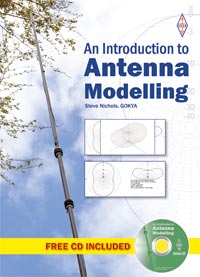 |
| The effects of coronal holes are likely to continue for a couple of years. |
This will show that we can expect the minimum to be around late 2019 or 2020. It is hard to be precise, as the minimum is something you can define after the event, not before or during!
What I will say is that we can probably expect the effects of solar coronal holes to continue, at least until we are well into the minimum.
Geomagnetic storms can cause problems on HF, although they can also bring short-lived ionospheric enhancements so they are a double-edged sword.
For example, on Tuesday 10th October the bands were open to DX all the way up to 12 metres. But as the solar wind from the coronal hole hit on Wednesday, apart from a short-lived ionospheric enhancement the MUFs took a dive.
By Thursday (12th) lunchtime, 20m was struggling to fully open and 17m was showing very little activity indeed. But by Thursday afternoon, and with a K of 5, I had worked Saudi Arabia on 10m SSB.
This shows that at sunspot minimum with a solar flux index of just 66, quiet geomagnetic conditions may be better than stormy ones. So look for a K index in three 0-2 range, not 5-7! But then again, when solar plasma first hits the earth we may get some short-lived enhancements right up to 10m, so a high initial K index can work for us.
For those who weren't at the lecture, I showed that monthly average maximum useable frequencies will decline with the sunspot number. This doesn't mean there won't be F2-layer openings on 21MHz and higher, just that they won't be as reliable or as long lasting.
Other than that I encourage people to play with a propagation program to get an idea of what might be possible.
My suggestions are:
Windows based
VOAProp
HAMcap
W6ELProp (when installing, right click and run as administrator on Windows 10)
VOACAP
Online
VOACAP.com
Predtest.uk
Other sources of info I mention are:
Solarham.com
NOAA – Space Weather Prediction Centre
Real-time F2 critical frequency display (this will soon move to Propquest.co.uk)
Smoothed Sunspot Numbers
Latest extreme UV image of the sun from the Solar Dynamics Observatory spacecraft (shows coronal holes)
Lastly, I talk about the difficulties of predicting openings with FT8. One suggestion is to use VOACAP and set the required SNR to a figure of -20dB or so. It is usually set to about 24-31dB for CW and 45 for SSB. This is still experimental (as some SNR figures are quoted as dB per Hz, while others are quoted in a 2500Hz bandwidth), so you might have to play with it. VOACAP’s settings are critical and it is worth reading the notes on the VOACAP website and also the “Top 10 mistakes in using VOACAP”.










I find the post much too pessimistic and not based on actual operating experience. My log is full every day for the past several months with 12m DX out to the Indian Ocean, Latin America, Asia, etc. This makes 2017 so far much, much better than 2016, when propagation was much more intermittent.
ReplyDeleteYes, but we are not at sunspot minimum yet and won't be for a couple of years. This was looking ahead to 2019/2020. The recent DX has also been helped by ionospheric enhancements from the coronal holes and is not sunspot related.
DeleteAh, but you say in your post:
Delete'the minimum is something you can define after the event, not before or during! '
The important thing is that 15m is open pretty much every day, 12m almost every day (YB0 this morning), and 10m occasionally. That's pretty good for *this stage* of the solar cycle, forecast or not.
Fair enough. What mode are you talking about? I think SSB is a different kettle of fish to FT8/JT65.
ReplyDelete